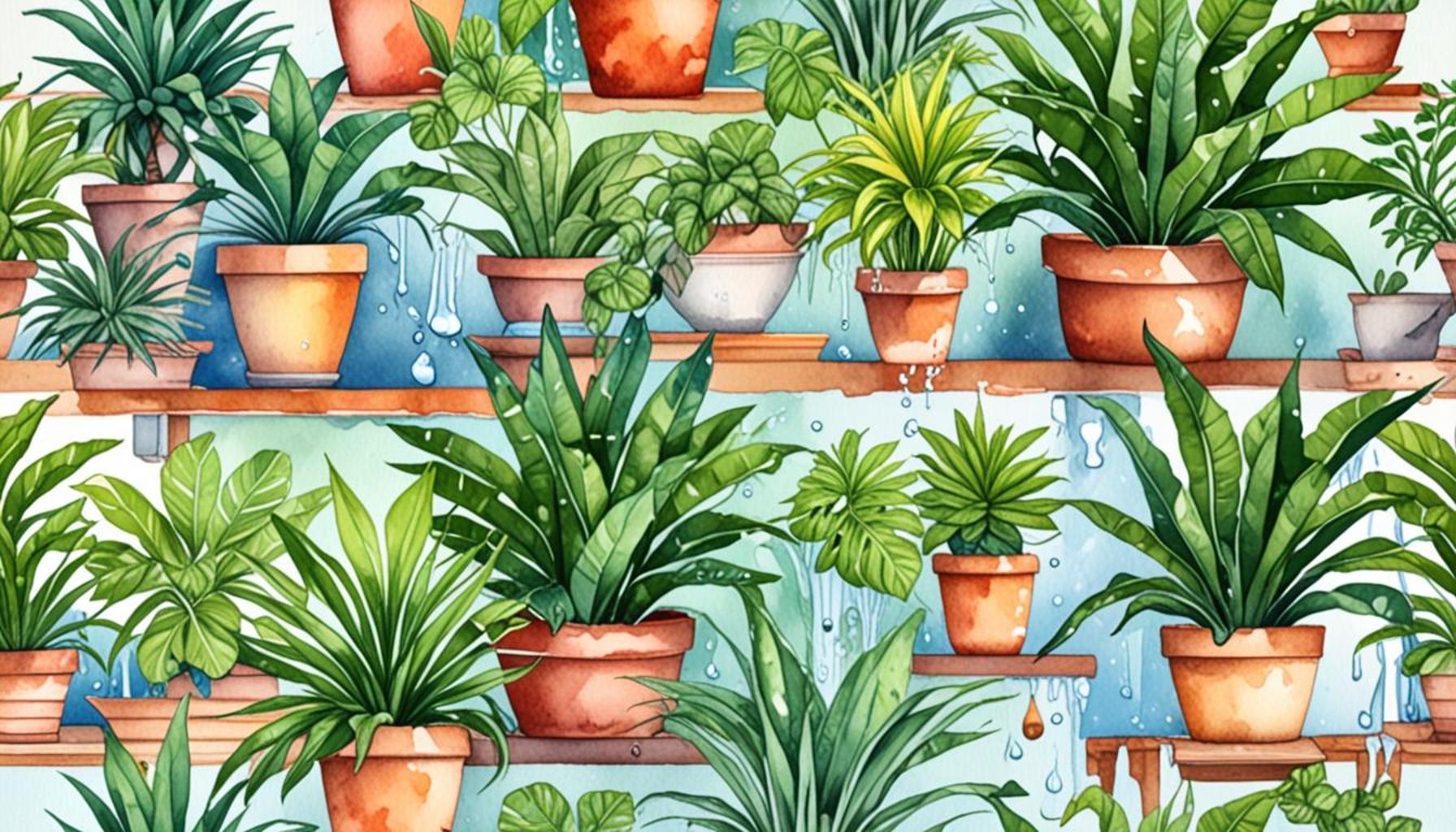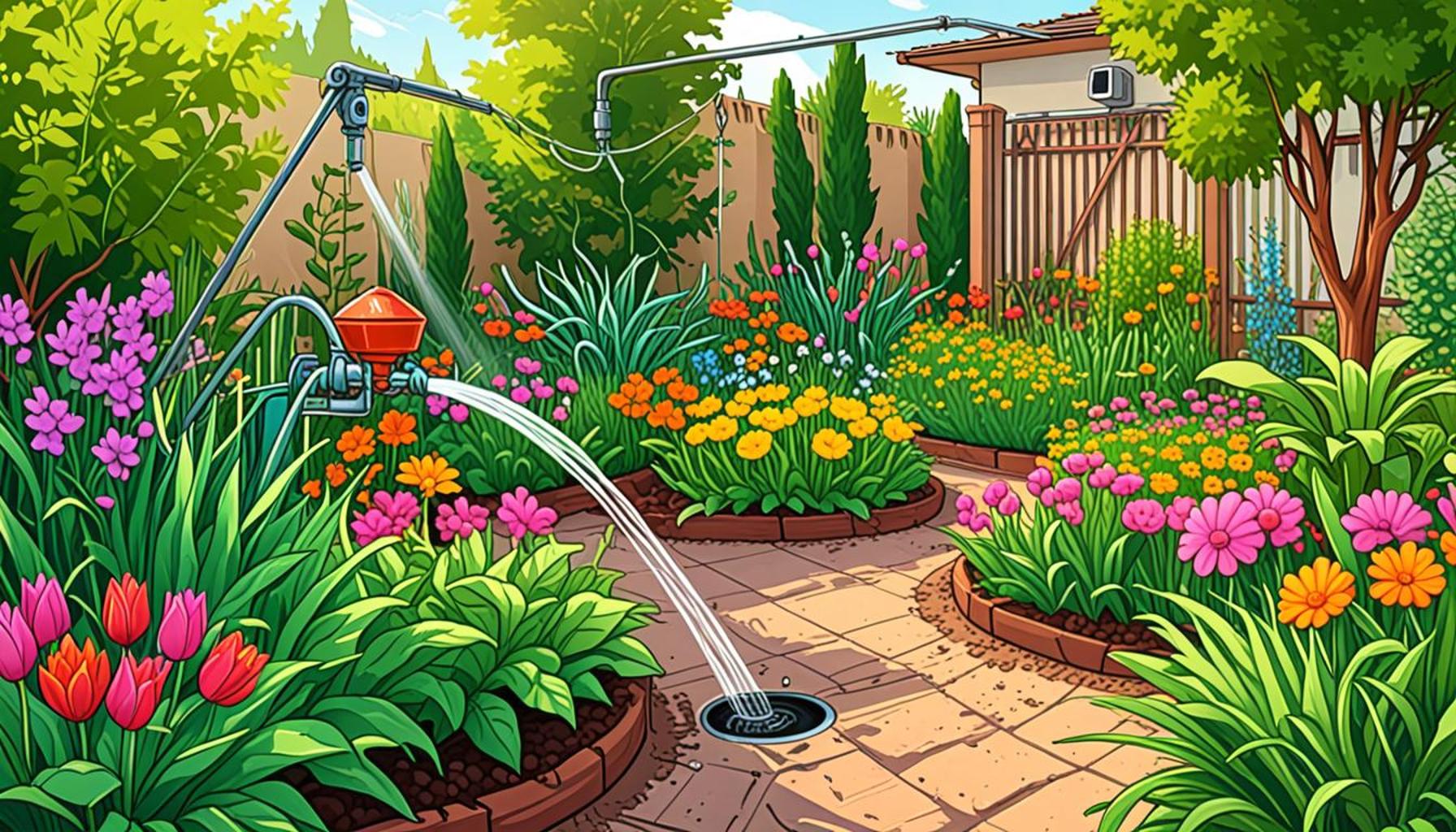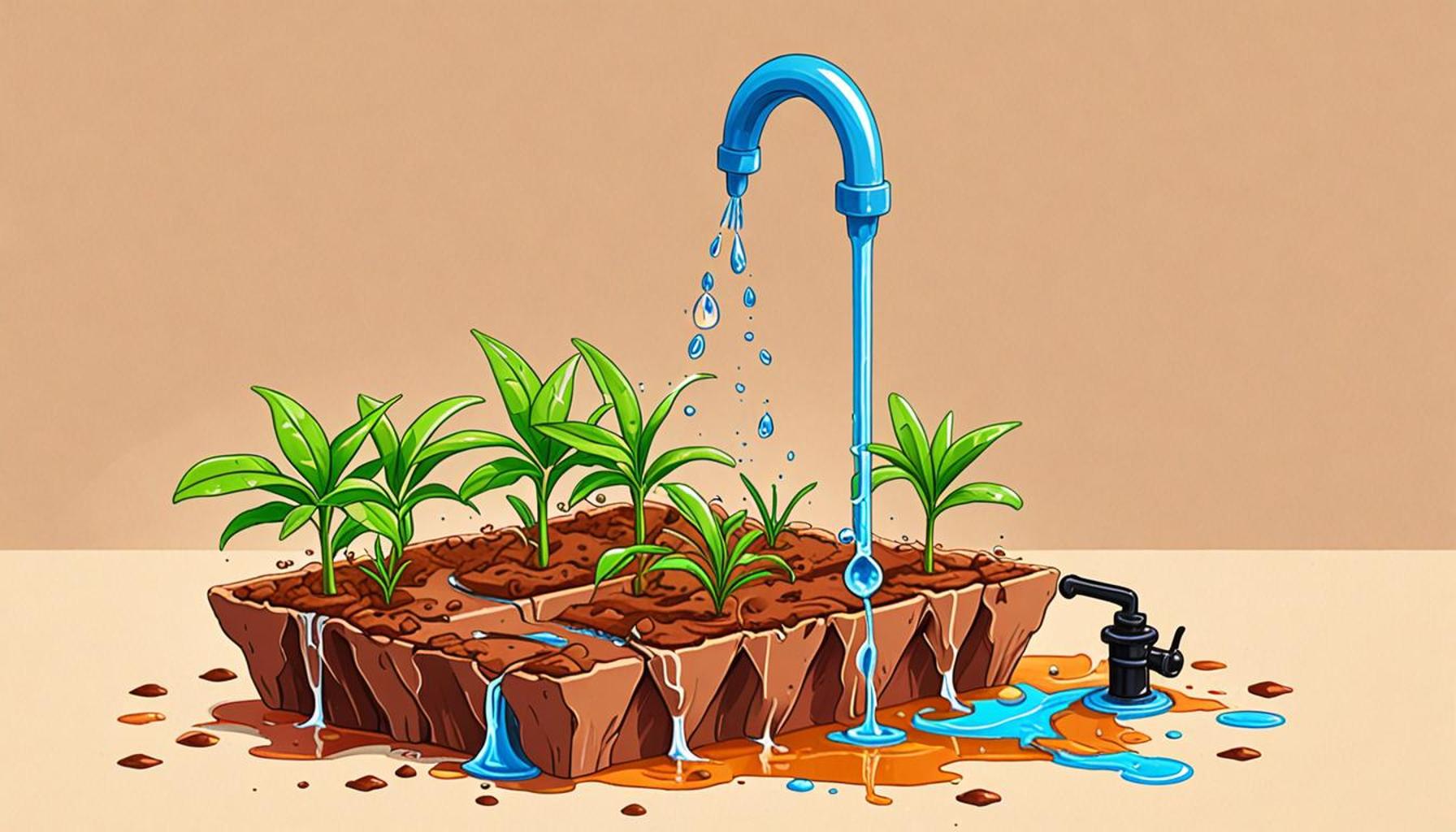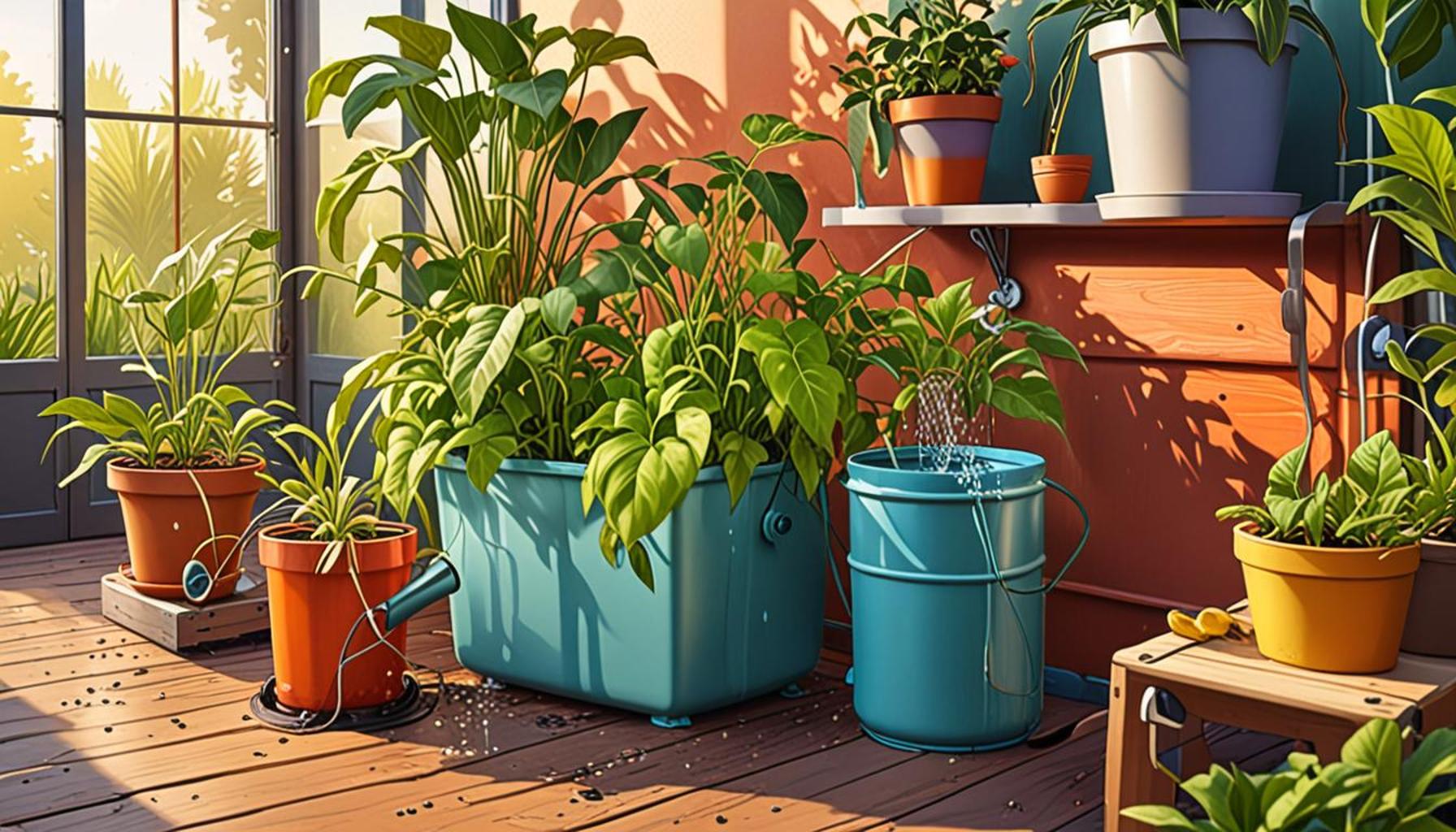The Importance of Water: How to Understand the Irrigation Needs of Houseplants

The Vital Role of Water in Houseplant Care
For any plant lover, understanding the irrigation needs of houseplants is essential to keep them thriving. Water acts as a lifeline, delivering nutrients and facilitating photosynthesis, which is key for growth. However, not all houseplants require the same amount of water. The delicate balance of hydration is crucial and merits attention, as even small deviations can lead to significant changes in a plant’s health.
Recognizing the specific needs of each plant species can prevent overwatering or underwatering. Every plant has adapted to thrive in particular environmental conditions, and understanding these nuances will allow you to create an optimal environment. Here are some critical factors to consider:
- Soil Type: Different soils retain moisture differently. For example, a potting mix designed for succulents is typically sandy and well-draining, meaning it dries out quickly. Conversely, a soil mixture with organic materials retains moisture and is suitable for tropical plants like ferns.
- Plant Size: Larger plants typically require more water due to their larger root systems. A stately fiddle leaf fig, for instance, will need more frequent watering compared to a tiny pothos, reflecting varying demands for hydration as they grow.
- Light Conditions: Plants in brighter locations may dry out faster, necessitating more frequent watering. For example, a spider plant placed on a sunny windowsill may require watering twice a week, while the same plant in a shadier corner could thrive with only one weekly watering.
- Humidity Levels: Environments with higher humidity often need less frequent watering. For instance, if you live in a humid area like Florida, plants such as orchids may require less water than in drier states like Arizona, highlighting how climate significantly influences plant care.
Watering practices can significantly impact the health of your greenery. Discovering the right balance can make the difference between a flourishing plant and a wilting one. For instance, a common mistake is to assume that all houseplants survive with the same care norms; some need a good soak, while others prefer to be on the drier side. Regularly checking soil moisture levels using your finger or a soil moisture meter can help determine when exactly to water, ensuring that your plants receive just the right amount of hydration.
Delving deeper into the importance of water for plants not only enhances your home environment but can also elevate your gardening skills. A well-watered plant not only boasts vibrant foliage but also improves your indoor air quality by filtering toxins. Conversely, plants that do not receive adequate water can exhibit signs of distress such as brown leaf tips or stunted growth.
As you explore further, you’ll find that a little knowledge about hydration can go a long way in nurturing your houseplants. Join us as we unravel the intricacies of watering and enhance your journey as a plant enthusiast. Remember, understanding your plants’ hydration needs is not just a matter of following rules; it’s about observing, learning, and adapting to ensure that your botanical friends thrive.
LEARN MORE: Click here to find out how to protect your crop</a
Understanding Plant Watering Patterns
Watering houseplants is not merely a routine task; it is an art that requires keen observation and an understanding of various irrigation needs. To cultivate healthy plants, you must first recognize their hydration patterns, which are influenced by a multitude of factors including species, environment, and seasonal changes. Each plant has its own signature thirst, and learning to decipher these signals is critical for any plant caregiver.
One foundational concept in houseplant care is the water retention rate of the soil. This refers to how effectively your chosen potting medium holds onto moisture. For example, a peat-based mix retains water well and is ideal for moisture-loving plants like African violets. In contrast, a gritty mix suitable for cacti will drain rapidly, requiring frequent checks for dryness. Understanding these soil characteristics can help you adjust your watering schedules and techniques accordingly.
Moreover, it’s essential to assess your plants’ needs based on their life cycle stages. Newly propagated cuttings, for instance, require more frequent but lighter watering to establish roots, while mature plants may benefit from deep and less frequent watering to encourage root growth deeper into the soil. Implementing techniques such as the “soak and dry” method, where you saturate the soil thoroughly and then allow it to dry out completely before the next watering, can promote robust root systems.
Factors Influencing Watering Frequency
To enhance your understanding of houseplant hydration, consider the following factors that affect watering frequency:
- Temperature: Higher temperatures increase evaporation rates, often necessitating more frequent watering. Conversely, cooler temperatures can lead to slower water absorption, meaning a less frequent watering schedule might be appropriate.
- Seasonal Changes: In general, plants require more water during their growing season—typically spring and summer—while they may enter dormancy in fall and winter, reducing their water needs significantly.
- Plant Type: Certain plants have adapted to thrive with minimal water, such as succulents and snake plants, while others like peace lilies flourish with more frequent hydration. Familiarizing yourself with the specific needs of each variety can enhance their growth.
- Pot Size: Larger pots holding more soil can retain moisture for longer periods, which means plants in them might not need watering as often as those in smaller containers.
As you refine your watering techniques, consider maintaining a watering journal that outlines when you water each plant, the type of soil used, and the observed effects. By keeping track of these details, you’ll develop a deeper understanding of individual plant needs and adjust your watering schedule accordingly. The finer nuances of water management can transform your plants’ health, contributing not only to their lushness but also to an enriching indoor atmosphere.
When it comes to understanding the irrigation needs of houseplants, recognizing the signs of both over-watering and under-watering is crucial. Monitoring soil moisture regularly can prevent common issues that arise from improper watering. One useful technique is the finger test: insert your finger into the soil up to the second knuckle. If the soil feels dry at that depth, it’s usually time to water. Conversely, if the soil is still wet, wait a few days before checking again. This method helps in assessing the plant’s needs accurately, preventing root rot caused by excess moisture or stunted growth from drought stress. Each plant species has its unique water requirements; thus, understanding if your houseplant originates from a dry or humid environment can guide watering routines. For example, tropical plants thrive in high moisture, while succulents prefer drier conditions. Additionally, seasonal changes can influence when and how much you should water; during growth phases in spring and summer, plants typically require more water than in the dormant months of fall and winter.Moreover, the type of pot and soil used can affect water retention. Well-draining pots and specific soil mixes such as cactus or orchid mixes allow excess water to escape, aiding in preventing stagnant conditions. Incorporating mulch or decorative stones on the surface of the soil can also help retain moisture while providing a polished look to your plant display. In conclusion, effective understanding of a plant’s irrigation needs involves continuous observation, knowledge of its natural habitat, and adjusting care routines with changing seasons. This combination ensures that your houseplants not only survive but thrive, contributing beauty and health to your indoor space.
DISCOVER: Click here to learn more
Identifying Signs of Overwatering and Underwatering
Understanding the irrigation needs of houseplants extends beyond knowing how much to water; it also encompasses the ability to identify the signs of overwatering and underwatering. Both conditions can lead to distress for your plants, manifesting in distinct symptoms that, once recognized, can be addressed swiftly to avert long-term damage.
Overwatering is often the more common mistake, typically stemming from a desire to be diligent in plant care. Signs include yellowing leaves, which often appear droopy or mushy as the roots struggle for oxygen in waterlogged soil. Additionally, the presence of mold on the surface of the soil or a foul smell emanating from the pot are red flags indicating excess moisture. If left unaddressed, it can lead to root rot, a serious condition that can quickly kill your plant. The best course of action if you suspect overwatering is to allow the soil to dry out thoroughly before resuming a watering schedule.
Conversely, underwatering can be equally detrimental. A telltale sign is leaf curling or crisping at the edges, often accompanied by a dry and brittle feel. In more severe cases, plants can exhibit stunted growth or dropped leaves as they prioritize survival over growth. Adjusting your watering strategy based on these indicators is crucial. If your plant thrives in a warm environment but shows signs of stress, try increasing your watering frequency while carefully monitoring moisture levels.
The Role of Humidity and Air Circulation
Beyond just the soil and watering schedules, factors such as humidity and air circulation play significant roles in your houseplants’ hydration dynamics. Many houseplants, especially tropical varieties, thrive in humid conditions, which can enhance their water uptake. If you notice that your ferns or peace lilies are wilting, consider increasing the humidity around them through methods such as misting or placing a humidifier nearby. Clustering plants together can also amplify localized humidity, creating an environment where they can flourish.
Additionally, proper air circulation is paramount in preventing moisture-related problems. Stagnant air can lead to increased humidity levels around the leaves, encouraging fungal growth and leaving the plant vulnerable to pests. Ensure your plants are spaced out appropriately and consider using fans or opening windows to improve airflow in your indoor garden.
Utilizing Tools to Monitor Soil Moisture
In this digital age, tools are available to assist in monitoring soil moisture levels, making it easier for plant owners to cater to their houseplants’ hydration needs. Soil moisture meters are increasingly gaining popularity—they provide instant feedback on whether your plant needs watering, allowing for precision that might be challenging to achieve with manual checks. These devices can be particularly beneficial for busy individuals who may not have the time to inspect their plants daily.
Another approach is the “finger test,” which involves inserting your finger into the soil up to two inches deep. If the soil feels dry at that level, it’s time to water. However, this method may not be as accurate if the plant has deeper roots or if the soil mixture has inconsistent moisture levels. Regardless of the method employed, the importance of correct watering cannot be overstated—it can be the difference between a thriving indoor garden and a wilted one.
DISCOVER MORE: Click here for insights on harvesting at the perfect moment
Conclusion
Understanding the importance of water in maintaining the health of houseplants is akin to nurturing a delicate relationship that requires observation, adjustment, and care. As we have discussed, knowing how to water your plants effectively is not just about frequency but also about being attentive to their unique needs. Proper irrigation is a cornerstone of successful indoor gardening, and recognizing the signs of overwatering and underwatering is crucial for their vitality. A well-informed plant owner can detect these subtle cues and act promptly, ensuring that their leafy companions continue to thrive.
Moreover, factors such as humidity and air circulation cannot be overlooked when considering the hydration dynamics of your houseplants. By creating an optimal environment that complements your watering routine, you set the stage for thriving greenery. The use of modern tools, like soil moisture meters, can also offer peace of mind and assist busy plant enthusiasts in maintaining the right moisture levels with ease.
Ultimately, cultivating a successful indoor garden requires a balance of patience, knowledge, and responsiveness. Whether you are just starting your journey or are a seasoned plant parent, understanding the intricate relationship between water and houseplant health can lead to a flourishing indoor oasis. So venture forth into the verdant world of houseplants, equipped with the skills to provide them with the hydration they need, and watch as your indoor garden flourishes into a source of pride and joy.


